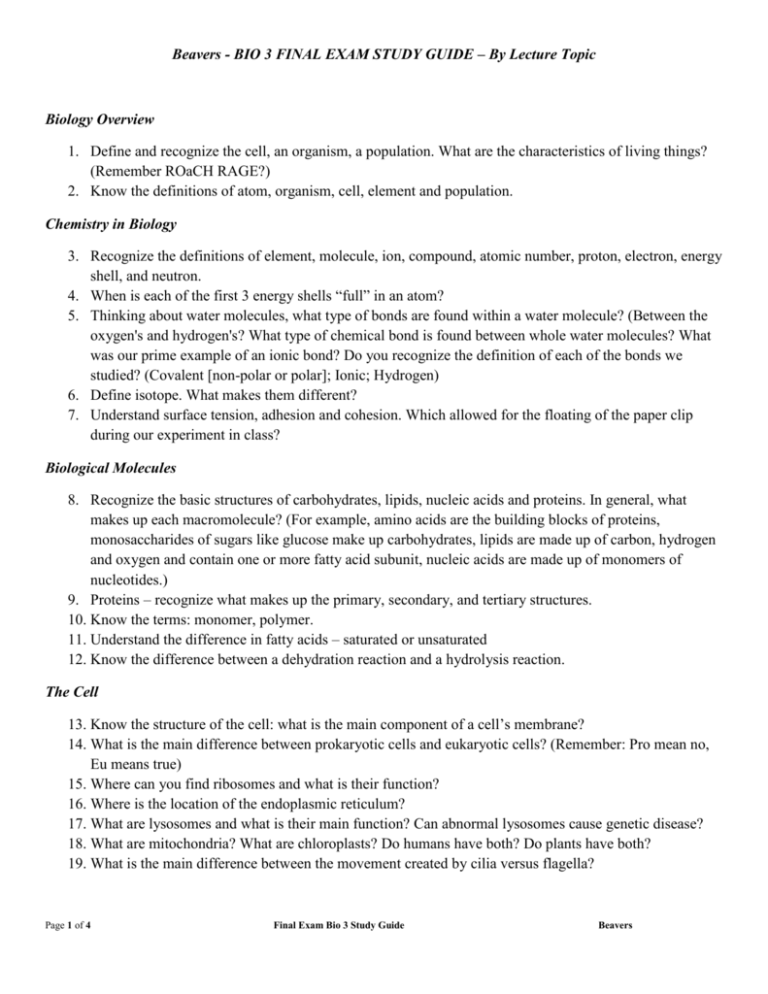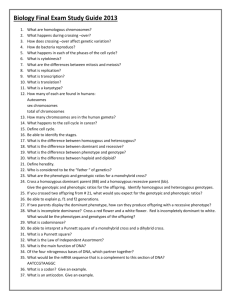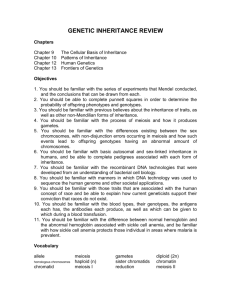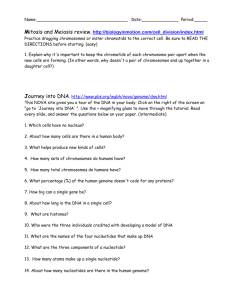000 final exam study guide in word
advertisement

Beavers - BIO 3 FINAL EXAM STUDY GUIDE – By Lecture Topic Biology Overview 1. Define and recognize the cell, an organism, a population. What are the characteristics of living things? (Remember ROaCH RAGE?) 2. Know the definitions of atom, organism, cell, element and population. Chemistry in Biology 3. Recognize the definitions of element, molecule, ion, compound, atomic number, proton, electron, energy shell, and neutron. 4. When is each of the first 3 energy shells “full” in an atom? 5. Thinking about water molecules, what type of bonds are found within a water molecule? (Between the oxygen's and hydrogen's? What type of chemical bond is found between whole water molecules? What was our prime example of an ionic bond? Do you recognize the definition of each of the bonds we studied? (Covalent [non-polar or polar]; Ionic; Hydrogen) 6. Define isotope. What makes them different? 7. Understand surface tension, adhesion and cohesion. Which allowed for the floating of the paper clip during our experiment in class? Biological Molecules 8. Recognize the basic structures of carbohydrates, lipids, nucleic acids and proteins. In general, what makes up each macromolecule? (For example, amino acids are the building blocks of proteins, monosaccharides of sugars like glucose make up carbohydrates, lipids are made up of carbon, hydrogen and oxygen and contain one or more fatty acid subunit, nucleic acids are made up of monomers of nucleotides.) 9. Proteins – recognize what makes up the primary, secondary, and tertiary structures. 10. Know the terms: monomer, polymer. 11. Understand the difference in fatty acids – saturated or unsaturated 12. Know the difference between a dehydration reaction and a hydrolysis reaction. The Cell 13. Know the structure of the cell: what is the main component of a cell’s membrane? 14. What is the main difference between prokaryotic cells and eukaryotic cells? (Remember: Pro mean no, Eu means true) 15. Where can you find ribosomes and what is their function? 16. Where is the location of the endoplasmic reticulum? 17. What are lysosomes and what is their main function? Can abnormal lysosomes cause genetic disease? 18. What are mitochondria? What are chloroplasts? Do humans have both? Do plants have both? 19. What is the main difference between the movement created by cilia versus flagella? Page 1 of 4 Final Exam Bio 3 Study Guide Beavers How Cells Work 20. If you were to compare a solution that a cell is in to the cell’s cytoplasm in terms of dissolved particles and free concentration of water, would you determine if the environment or the cytoplasm was: isotonic, hypertonic or hypotonic? 21. What is a neutral solution in terms of H+ and OH-? How is it different from an acidic solution or a basic solution? What would its pH be? Is a pH of 1 acidic or basic? How about a pH of 12? 22. Know the definition of concentration. 23. What does selective permeability mean? Is a biological membrane like the cell selectively permeable? 24. What is phagocytosis? Is it a form of endocytosis or exocytosis? Fungi, Ordering Life 25. Which two categories from those we discussed listed here: Kingdom, Phylum, Class, Order, Family, Genus, and Species, are used to give organisms scientific names? For example, humans are Homo sapiens. 26. Is fungus usually green? Can fungus photosynthesize? 27. How does fungus digest its food? Viruses 28. Viruses – know the definition and general structure. Do they reproduce on their own or do they hijack an organisms cell’s reproductive machinery? Are viruses living? Is DNA or RNA their hereditary material? Ecology 29. What are trophic levels? Recognize the difference between primary consumers and primary producers. 30. What is carrying capacity? What determines it? 31. What does a J curve represent? When does population growth occur? What is exponential growth? What is zero population growth? Can you define immigration and emigration? 32. What is a decomposer? What organisms will they decompose? Energy, Photosynthesis 33. What is the definition of energy? 34. What is metabolism? 35. What are exergonic and endergonic reactions and what do the graphs for each look like? 36. Compare NADPH and ATP – which is the most common energy carrying molecule of living organisms and which is a common ELECTRON CARRIER. 37. What is photosynthesis? (No one is allowed to get this wrong.) 38. What do the light reactions produce? What does the Calvin cycle (dark reactions) produce? 39. The oxygen released by photosynthesis comes from? 40. Why do we see leaves as green? What are pigments and which is the main pigment of photosynthesis? Page 2 of 4 Final Exam Bio 3 Study Guide Beavers Cellular Respiration 41. Think about a mitochondrion and then answer: a. Where does glycolysis occur? Where does Acetyl-CoA formation occur? b. Where does fermentation occur and what makes it occur? c. Where does the Krebs cycle occur? d. What is the main products produced in the Krebs cycle and where will they be sent? e. Where would you find the electron transport chain (ETC) for cellular respiration? Is this different than where you would find the electron transport chain for photosynthesis? 42. What is the great electron acceptor of cellular respiration that keeps the electron transport chain moving? Molecular Basis of Inheritance 43. Chromosome structure: Know how DNA, genes, chromatin, chromosomes, chromatid, and homologous chromosomes relate to each other. Perhaps draw out all of them in a cell that is 2n=4. 44. If you had a complete sample of DNA from a particular organism, and 15% of the sample was the nucleotide cytosine, what percent of the sample would contain the base adenine? 45. What is semi-conservative replication? 46. What is transformation? Cellular Reproduction 47. Review chromosome behavior during replication (semi-conservative), meiosis and mitosis (steps for both). What are synapsis, crossing over, segregation, transcription, translation, and fertilization? 48. What would complementary base-pairing of A,T,C, & G in two strands of DNA and A, U, C, G with RNA and DNA look like? 49. If given the number of chromosomes in a haploid cell, be able to predict the number of chromosomes in that organism’s diploid cell. 50. Compare homologous chromosomes to sister chromatids. Patterns of Inheritance 51. What is a Punnett square used to predict? 52. What are true-breeding parents? 53. What does it mean to be heterozygous or homozygous? How does it relate to dominant or recessive inheritance? What is the only way to express a recessive trait? What would be the genotype and phenotypes of flower color PP, Pp, pp? Which are dominant, recessive, heterozygous, homozygous? 54. Make sure you can answer any question that asks the probability of a child being normal, a carrier, or affected if the parents are both homozygous dominant, both homozygous recessive, or both carriers or ANY COMBINATION OF PARENT for autosomal recessive, autosomal dominant, X-linked, or incompletely dominant inheritance. (Do all of your genetics problems, and perhaps some in your textbook.) a. Example: What is the probability of producing a normal child (non-carrier) from a mating where one parent is a carrier of an autosomal recessive disorder and the other parent is affected? Page 3 of 4 Final Exam Bio 3 Study Guide Beavers Gene Expression 55. Can you predict what amino acid would be added to the growing polypeptide chain (using the genetic code) if you were given a strand of DNA? A strand of mRNA? 3 tRNA anticodons? Try these: (remember that you have a genetic code in your lab manual). a. DNA: AATCAGCCG b. mRNA: CCUAGGUUU c. tRNA: GAACTAUCG 56. Know that the correct flow of “information in the cell” is DNARNAPROTEIN 57. How many nucleotides are in a codon? In an anti-codon? Where are each found? 58. How can mutations in DNA arise? 59. Where is the location of protein synthesis? 60. What are Barr bodies? Are they found in all cells in the body? 61. How do Barr bodies and x-inactivation determine the colors of a calico or tortoiseshell cat? Are these cats male or female and why? 62. Know what the karyotypes of the following syndromes would be (in a male or female): triploidy, Turner syndrome, Klinefelter syndrome, Down syndrome, normal males and females. Biotechnology 63. Know what a gel electrophoresis is and what a DNA fingerprint from a crime scene could tell a homicide detective. 64. Restriction enzymes – what are they and what do they accomplish? 65. What produces recombinant DNA? 66. What are short tandem repeats (STRs) and how do we produce “fingerprints” with them? Natural Selection, Origin of Life, Evolution 67. What are the conditions of a Hardy-Weinberg population? 68. Define non-random mating and random mating. What is artificial selection? 69. Are mutations rare? Are they always harmful? Can they be helpful or neutral? Do mutations rely on natural selection to spread a mutation through a population? Do they provide the potential for evolution? 70. Where type of cell must carry a mutation for it to affect evolution of organisms? 71. Stanley Miller and Harold Urey’s experiment attempted to form what type of molecules? How? 72. Population genetics – definition, uses, understand frequency, distribution and inheritance of alleles in a population. 73. From your lab #13, know the definitions of: evolution, mimicry, predation, adaptive radiation Page 4 of 4 Final Exam Bio 3 Study Guide Beavers








